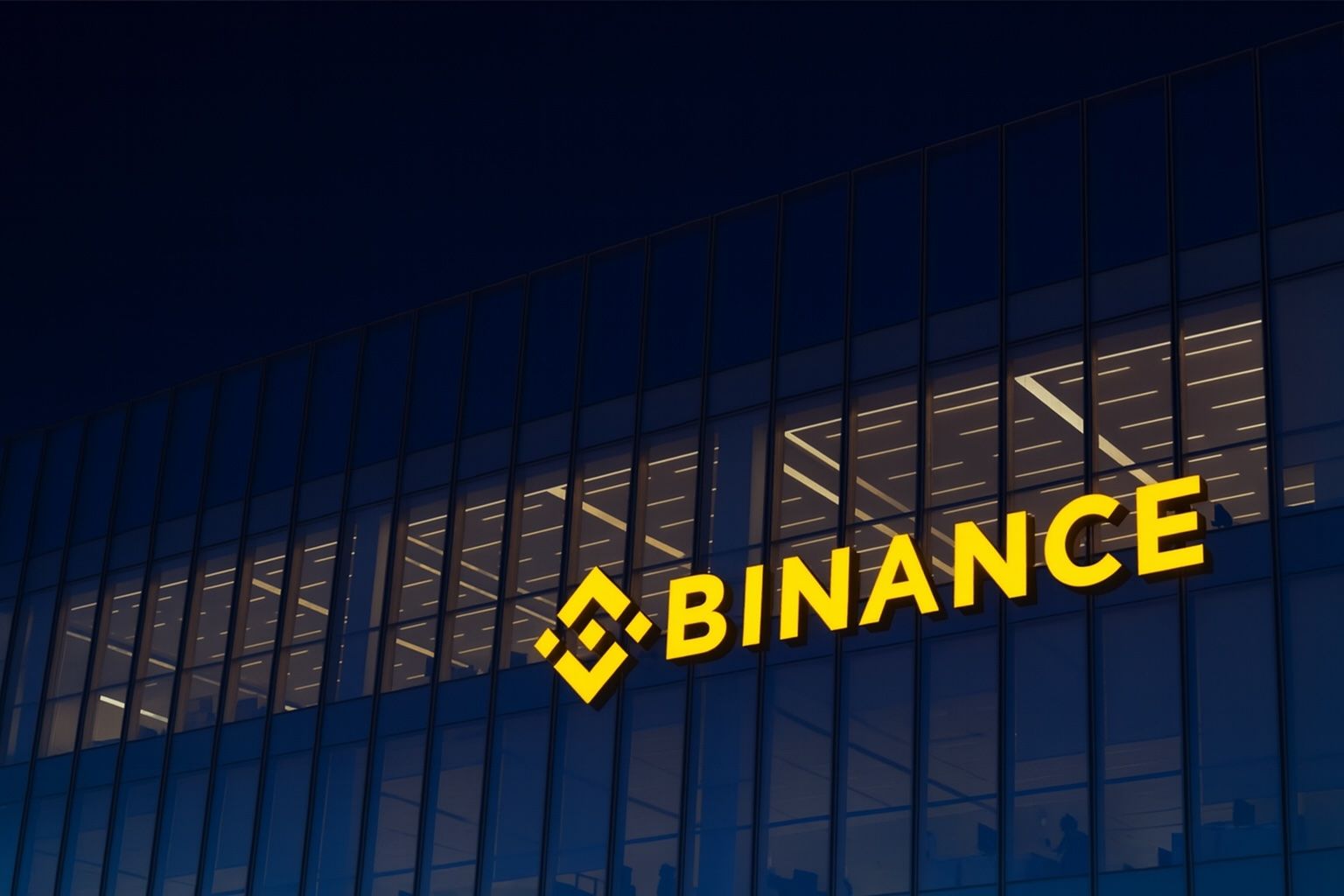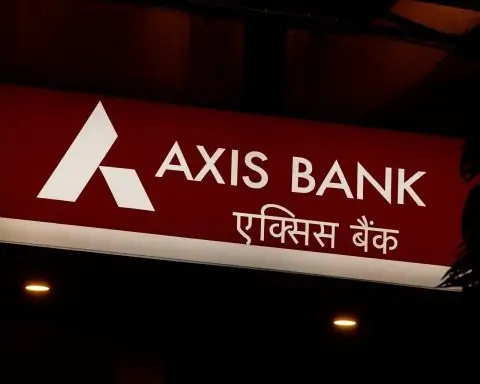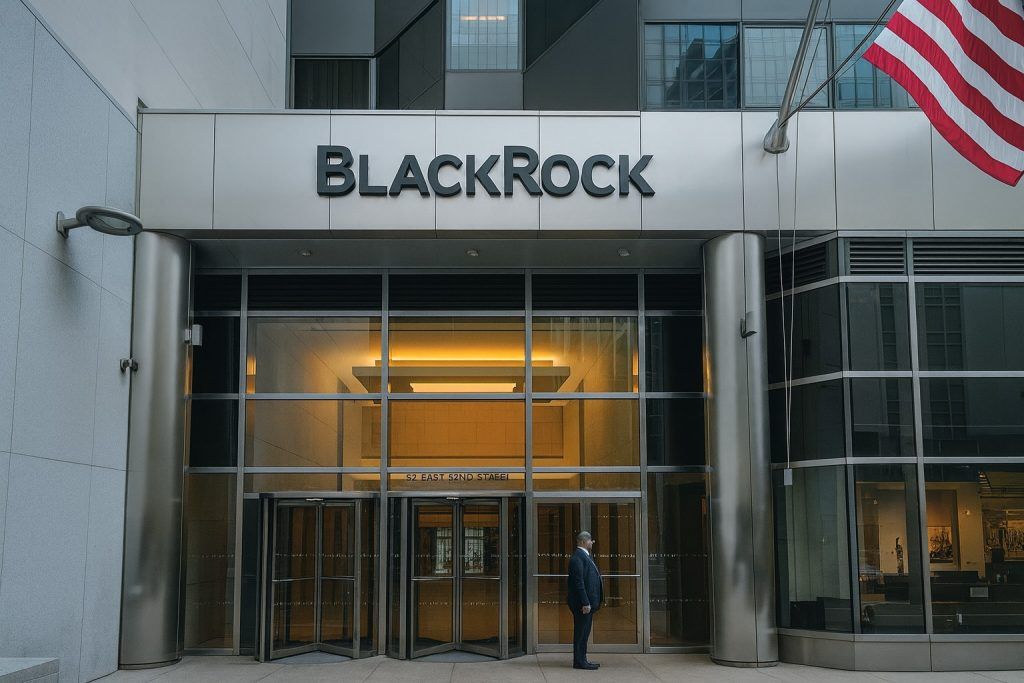- Massive Liquidations: Crypto markets suffered a record crash on Oct 10–11, 2025. Over $19–20 billion of leveraged positions were liquidated in 24 hours as Trump’s surprise 100% China tariffs announcement spooked traders [1] [2]. About 1.6 million crypto traders were wiped out in a single day [3].
- Bitcoin & Altcoin Plunge: Bitcoin fell ~16% from its recent all-time high (~$125K) to briefly below $105K [4]. Ethereum and other altcoins plunged 15–40% (e.g. ETH -15–20%, some altcoins -30–40%) [5] [6]. By Oct 12 BTC had partially rebounded to ~$111–112K [7].
- DeFi vs. CeFi: While centralized exchanges lagged, DeFi protocols handled the shock effortlessly. Uniswap hit a $10 billion daily volume record and Aave liquidated ~$180M in an hour with no downtime [8]. As Euler co-founder Michael Bentley noted, “that stress test was wild, but DeFi worked flawlessly.” [9]
- Binance Outages & Compensation: The volatility overloaded Binance’s systems, causing order failures and frozen accounts. Binance co-founder Yi He apologized, saying anyone who lost funds “attributable to Binance”can contact support for case-by-case review and compensation [10] [11]. The CEO, Richard Teng, also apologized and emphasized the company would take responsibility “without making excuses.” [12] An official Binance notice (Oct 11) confirmed teams are reviewing affected users of USDE, BNSOL, and WBETH markets and planning compensation measures [13] [14].
- Compensation Plan Details: Binance announced a 72-hour payout plan. Users who lost on the Oct 11 depeg of tokens USDE, BNSOL, WBETH will be compensated based on the difference between the liquidation price and market price around that event [15]. Traders outside the automatic window can still appeal to support for manual review of their losses [16]. Binance is also boosting risk controls (tightening price indexes and real-time risk checks) to prevent future glitches [17] [18].
- BNB and Binance News: Remarkably, Binance Coin (BNB) soared to a new ATH (~$1,190) just days before the crash [19]. A TS2.Tech market report notes Binance’s Q3 saw record $14.8B net inflows and ~40% of global crypto volume [20]. BNB’s market cap topped $163B [21]. Analysts remain extremely bullish on BNB (one even predicts “$2,000 BNB is coming in 2025 and there’s nothing stopping that” [22]). Regulatory headwinds have eased – in May 2025 the U.S. SEC dropped its case against Binance with prejudice [23], and reports say Binance may remove its DOJ oversight monitor from the 2023 settlement [24].
- Expert Outlook: Many analysts view the crash as short-term turbulence. Bernstein reaffirmed a $200K Bitcoin target by early 2026 [25], citing strong institutional demand. Crypto forensic expert Joshua Duckett said markets are already “kind of in a rebound-to-stable position” [26]. Historically October has been a bullish month for BTC; Timothy Peterson notes ~20% October gains often occur, predicting roughly +21% upside if patterns hold [27]. (Crypto strategist Samson Mow quipped, “there are still 21 days left in ‘Uptober’,” suggesting the dip may be a minor setback [28].) Nonetheless, some urge caution: a CoinDesk market team warned “all bets are off if U.S.–China tensions continue” [29], and investor Ray Dalio advises hedging with ~15% of your portfolio in gold during volatile times [30].
Why Crypto Markets Crashed
On Oct 10, 2025, former President Trump stunned markets by threatening 100% tariffs on Chinese imports (effective Nov 1) along with new export controls. This reignited full-scale trade-war fears and triggered a sudden flight from risk assets [31]. With crypto markets already jam-packed with leveraged bets, the effect was devastating. Within hours, Bitcoin crashed 16%, wiping out about $19–20 billion in margin positions – the largest crypto liquidation event ever [32] [33]. Over 1.6 million traders were liquidated in 24 hours [34], far exceeding any prior crypto crash (COVID-2020, FTX-2022, LUNA-2022). The selling was most intense on Friday night (Oct 10) and Saturday morning (Oct 11), when roughly $7B was flushed in a single hour [35].
By Oct 12, Bitcoin had stabilized around $111–112K, off its $125K high from Oct 5 [36] [37]. Ethereum, which hit a new $4.5K peak, had fallen into the mid-$3K range (–15–20%) [38]. Many smaller altcoins plunged 30–80%. For example, XRP fell ~31%, Dogecoin ~39% [39]. U.S. equity markets also slipped (Nasdaq –3.6%, S&P 500 –2.7% on Oct 10 [40]), but crypto bore the brunt of the storm. Crypto’s Fear & Greed Index plunged from 64 (“Greed”) to 27 (“Fear”) in 24 hours [41]. As CCN summarized, “the crypto market just experienced its largest single-day meltdown on record” [42].
Binance’s Response and Compensation Plan
The extreme volatility overwhelmed many centralized exchanges. Binance, the world’s largest crypto exchange, saw its trading engine buckle under record volume. Traders reported halted orders and frozen accounts as prices swung wildly. Binance immediately acknowledged the service disruptions on Friday night, attributing issues to the massive influx of users and market turbulence [43]. In a statement on Saturday, Binance’s Yi He (co-founder & Customer Service Head) said:
“Due to significant market fluctuations … some users have encountered issues with their transactions. If you have incurred losses attributable to Binance, please contact our customer service to register your case. We will review your account activity individually, analyze the situation, and provide compensation accordingly.” [44].
She emphasized that only losses caused by Binance’s system failures would be covered (losses from general market moves or unrealized losses are not eligible) [45] [46]. CEO Richard Teng echoed this commitment, apologizing and stating the company takes responsibility “without making excuses.” [47]. TodayOnChain’s summary of TheBlock reports: “Binance announced it will compensate some users who incurred losses during Friday night’s extreme volatility… the issues specifically targeted dramatic depegs in Ethena’s USDe, Binance’s BNSOL, and WBETH tokens” [48].
Official Binance channels later released detailed plans: affected users of the USDE, BNSOL and WBETH markets would be compensated. Binance set a 72-hour window to process payouts for the Oct 11 depeg event. Losses in the 05:36–06:16 UTC window on Oct 11 are calculated and repaid based on the difference between each user’s liquidation price and the market price around 08:00 UTC that day [49]. Those who fall outside the automatic compensation criteria can still submit a support ticket and have their case reviewed individually [50]. As Binance wrote on Oct 11 (Support Announcement): “Our team is currently conducting a thorough review of the impacted users… and the appropriate compensation measures.” [51].
Binance also pledged to strengthen its risk controls. The Oct 11 press release outlined plans to improve the price index sources (e.g. adding redemption price data and price floors for volatile tokens) and to run risk parameter checks more frequently [52]. In short, Binance’s official message was: we’re sorry for the outages, we’ll compensate victims of our failures, and we’re hardening the system against repeats [53] [54].
DeFi Resilience vs. Centralized Strain
The contrast between centralized exchanges and decentralized platforms was stark. As Binance struggled, DeFi protocols thrived under the chaos. According to reports, Uniswap (Ethereum’s leading DEX) saw a record $10 billion in trading volume on Oct 11 [55] – easily its highest-ever daily throughput. Lending platforms also held up; Aave processed $180 million in collateral liquidations within an hour without breaking a sweat [56]. Aave’s founder called this “the largest stress test of its $75B+ lending infrastructure” [57]. Euler co-founder Michael Bentley quipped that DeFi had “no emergency circuit breakers, no regulatory interventions. Just free markets and code.” His conclusion:
“That stress test was wild, but DeFi worked flawlessly.” [58]
In sum, while centralized orderbooks jammed, automated smart contracts handled the turmoil smoothly. This episode has become a rallying cry for DeFi supporters and a cautionary tale for CeFi: trustless protocols have no single point of failure.
Market Outlook and Expert Forecasts
Despite the severity of the crash, many analysts regard it as a one-off event driven by geopolitics and excess leverage, not a signal of a broken market. Bitcoin’s long-term uptrend remains intact for bulls. TechStock² (ts2.tech) notes that some analysts still project BTC reaching $130K–$160K by late 2025 or even ~$200K in 2026 [59]. One Bernstein research note has reaffirmed a $200K target by early 2026, citing surging institutional adoption [60].
Short-term, most experts expect a rebound. Crypto forensic specialist Joshua Duckett (CyberForensic) observed on Oct 12 that the worst was over: “Right now, we’re kind of in a rebound-to-stable position. Tomorrow is a new day” [61]. Historically, October has often seen strong gains in BTC. Analyst Timothy Peterson points out that “October is typically a bullish month for Bitcoin, often seeing ~20% gains”, and indeed he predicts roughly +21% upside in the coming week if historical patterns repeat [62]. In that vein, crypto strategist Samson Mow optimistically quipped:
“There are still 21 days left in ‘Uptober’.” [63]
However, some voices urge caution. CoinDesk’s market team warned that if US–China trade tensions continue to escalate, the current rally could be derailed [64]. And billionaire investor Ray Dalio reminded crypto traders that turbulent times warrant safe havens – he recommends holding roughly 15% of one’s portfolio in gold during such bouts of volatility [65]. In short, most believe the market will recover, but several say to watch geopolitics and maintain prudent hedges.
Buying Bitcoin on Binance – A Quick Guide
For newcomers wondering how to buy Bitcoin on Binance, it’s quite straightforward. Binance offers multiple purchase options: direct credit/debit card or bank transfers via its Buy Crypto portal, or peer-to-peer (P2P) trading. On the Buy Crypto page, users simply enter the USD (or other fiat) amount and select a payment method. Binance then shows quotes and fees, and upon confirmation the Bitcoin is deposited into the user’s Spot Wallet [66] [67]. The platform is protected by standard security and compliance checks.
Alternatively, Binance’s P2P service connects buyers and sellers directly. Binance P2P supports 700+ payment methods(bank transfer, SWIFT, SEPA, debit/credit cards, even cash) and over 100 local currencies [68]. Bank transfers remain very popular on P2P. Binance explains that you can link your bank account (or use SWIFT/SEPA for international transfers) and buy BTC from sellers who accept those payments [69] [70]. After sending the fiat to the seller’s account, the locked Bitcoin is released to your wallet – typically within minutes. For first-time buyers, Binance recommends completing identity verification (KYC) and then choosing your preferred buy route (card or P2P).
In practice, if you go to Binance.com and click “Buy Crypto,” you’ll see steps like “1. Enter Amount & Select Payment Method; 2. Confirm Order; 3. Receive Crypto” [71]. It’s a guided flow. The site also offers detailed tutorials. As Binance notes: “If you’re looking for a quick and convenient way to buy Bitcoin, try linking your bank account. Binance P2P allows users to easily buy Bitcoin by linking their bank as a payment method” [72]. In short, despite recent volatility, the process of buying Bitcoin on Binance remains fast and user-friendly.
Current Prices and Forecast Summary
As of Oct 12, Bitcoin trades around $111–112K [73] (having recovered from its ~$105K low). Ethereum is roughly $3,000–3,200 after the drop. Binance Coin (BNB) is near $1,170, off its $1,190 peak [74]. Looking ahead, market consensus is cautiously bullish. Most experts see this crash as a temporary drawdown in a continuing bull cycle, and many are calling it a buying opportunity. As one crypto strategist put it, “Bitcoin is still in an uptrend and this dip may be a minor setback” (with 21 days left in October, optimism remains) [75]. Combined with Binance’s strong fundamentals and recovering prices, these views suggest investors can prepare for further gains, while staying mindful of risks in the near term.
Sources: Authoritative news and analysis from Binance official channels [76] [77], TheBlock/DLNews reports [78] [79], and recent market coverage (TechStock²/ts2.tech [80] [81], Cointelegraph [82], CCN [83], etc.) are cited above. These detail the Oct 2025 market events, expert comments, and the step-by-step procedures for buying Bitcoin on Binance. All statistics and quotes are from these up-to-date sources.
References
1. www.dlnews.com, 2. www.ccn.com, 3. www.dlnews.com, 4. www.dlnews.com, 5. ts2.tech, 6. www.dlnews.com, 7. ts2.tech, 8. www.dlnews.com, 9. www.dlnews.com, 10. www.dlnews.com, 11. www.todayonchain.com, 12. www.todayonchain.com, 13. www.binance.com, 14. fxdailyreport.com, 15. fxdailyreport.com, 16. fxdailyreport.com, 17. www.binance.com, 18. fxdailyreport.com, 19. ts2.tech, 20. ts2.tech, 21. ts2.tech, 22. ts2.tech, 23. ts2.tech, 24. cointelegraph.com, 25. ts2.tech, 26. ts2.tech, 27. ts2.tech, 28. ts2.tech, 29. ts2.tech, 30. ts2.tech, 31. www.ccn.com, 32. www.dlnews.com, 33. ts2.tech, 34. www.dlnews.com, 35. www.dlnews.com, 36. www.dlnews.com, 37. ts2.tech, 38. ts2.tech, 39. ts2.tech, 40. ts2.tech, 41. ts2.tech, 42. www.ccn.com, 43. www.dlnews.com, 44. www.dlnews.com, 45. www.dlnews.com, 46. www.todayonchain.com, 47. www.todayonchain.com, 48. www.todayonchain.com, 49. fxdailyreport.com, 50. fxdailyreport.com, 51. www.binance.com, 52. fxdailyreport.com, 53. www.binance.com, 54. fxdailyreport.com, 55. www.dlnews.com, 56. www.dlnews.com, 57. www.dlnews.com, 58. www.dlnews.com, 59. ts2.tech, 60. ts2.tech, 61. ts2.tech, 62. ts2.tech, 63. ts2.tech, 64. ts2.tech, 65. ts2.tech, 66. www.binance.com, 67. www.binance.com, 68. www.binance.com, 69. www.binance.com, 70. www.binance.com, 71. www.binance.com, 72. www.binance.com, 73. ts2.tech, 74. ts2.tech, 75. ts2.tech, 76. www.binance.com, 77. fxdailyreport.com, 78. www.dlnews.com, 79. www.todayonchain.com, 80. ts2.tech, 81. ts2.tech, 82. cointelegraph.com, 83. www.ccn.com










